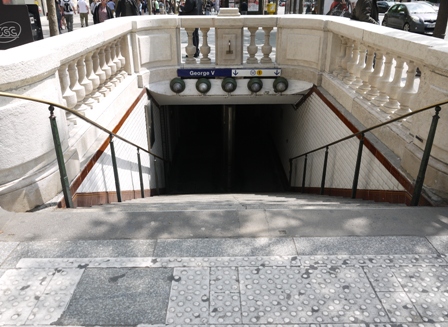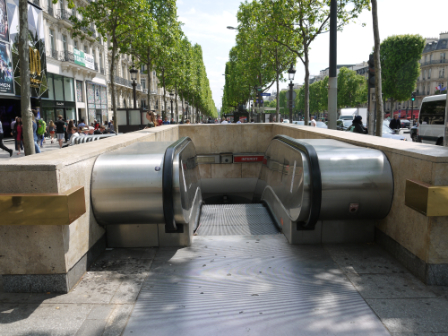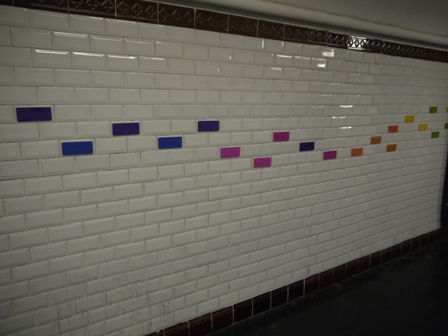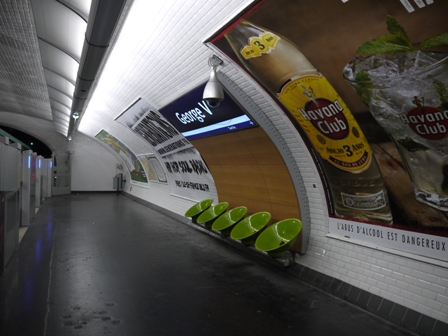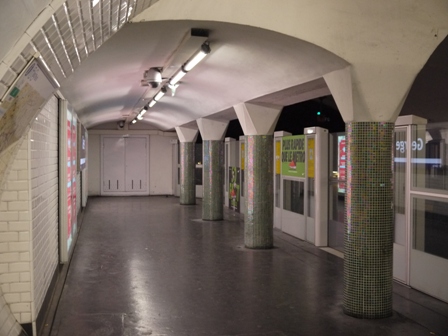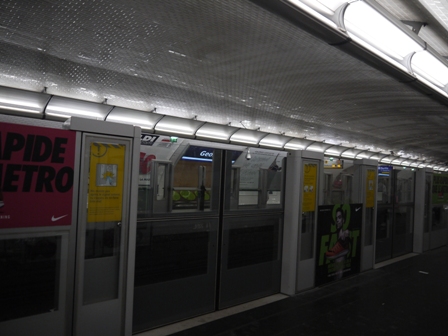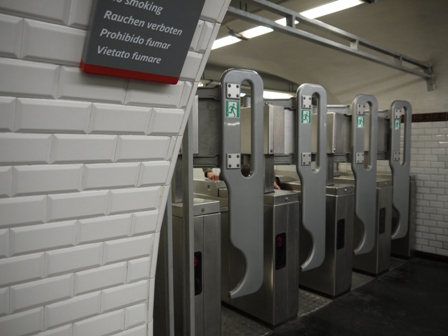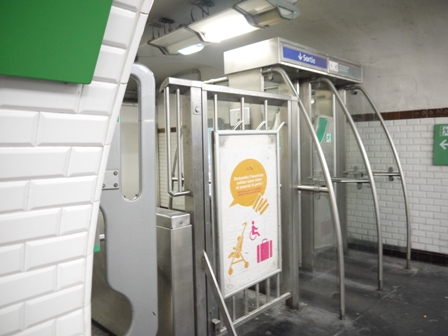The station opened on 13 August 1900 under the name Alma in commemoration of the battle of Alma. On 27 May 1920 the station was renamed to George V in honour of the British King, who supported France during World War I. It is an underground station.
The station is situated in the 8th arrondissement. It is served by the metro line 1.
The entrance of this station is on the upper parts of the Champs-Elysées. It is surrounded by a beige stone ballustrade designed by Marie-Joseph Cassien Bernard. At ground-level, at the back of the entrance, is a small plasticized blue sign with the station name and another white one with the number of the metro line.
Below the signs is a row of five round lights in green fixings.
The entrance walls are tiled in white metro tiles. The border tiles are brown.
Metal handrails have been installed on both sides and fixed to the stairs.
Further along is a narrow escalator leading to surface. Entering through this exit is forbidden.
The exit is surrounded by a thick wall covered in beige marbled stone slabs.
Wide bands of lacquered brass finish off the ends of the wall.
The walls of the corridor are tiled in white rectangular tiles with raised centres. The bottom row is made of brown plain ceramic tiles. The top border row is made of brown ceramic tiles with a squared flower pattern. Coloured plastic signs in rainbow colours have been stuck on individual tiles to brighten up the place.
The ceiling is painted white.
The corridor is leading to the platform. The ceiling is painted white.
Metal handrails have been fixed to both sides of the wall.
The seats on the platform are green metal half-bowl shaped. They are placed in front of a wooden panel with the station sign integrated at the top. The sign is lit from behind, the letters are white on a blue background.
The walls are covered with tiles with a raised centre.
The advertising posters are in large white ceramic frames.
The supporting pillars at the end of the platform are covered in small square iridescent mosaic tiles. The ceiling is painted.
The ground is covered in grey rubberised paint to prevent slipping.
The ceiling lights in this section are in long tubes on the apex.
A switch cupboard is at the end.
Platform doors have been installed. The area on the ground where the doors open has been marked with a white line. At the side of the doors are warnings not to enter when the horn sounds.
The curved ceiling is tiled in metro tiles.
The lights are in the Bruno-Gaudin style - the tubes are fixed on the lower metal part and uplight against the top.
Entrance to the platform. The metal swing doors open when a valid ticket is inserted. In case of emergency they are remotely opened to allow passengers to exit.
Platform exit. The two metal doors open at the side when pushed. The gate in the centre can be opened for people in wheelchairs or children in buggies.
The RATP commemorated the life of Queen Elizabeth II on the day of her state funeral (19 September 2022) by renaming the platform to Elizabeth II for the day.
George V was the maternal grandfather of Elizabeth II.
The signage shows her name in white all uppercase letters and 1926 - 2022 underneath it.

